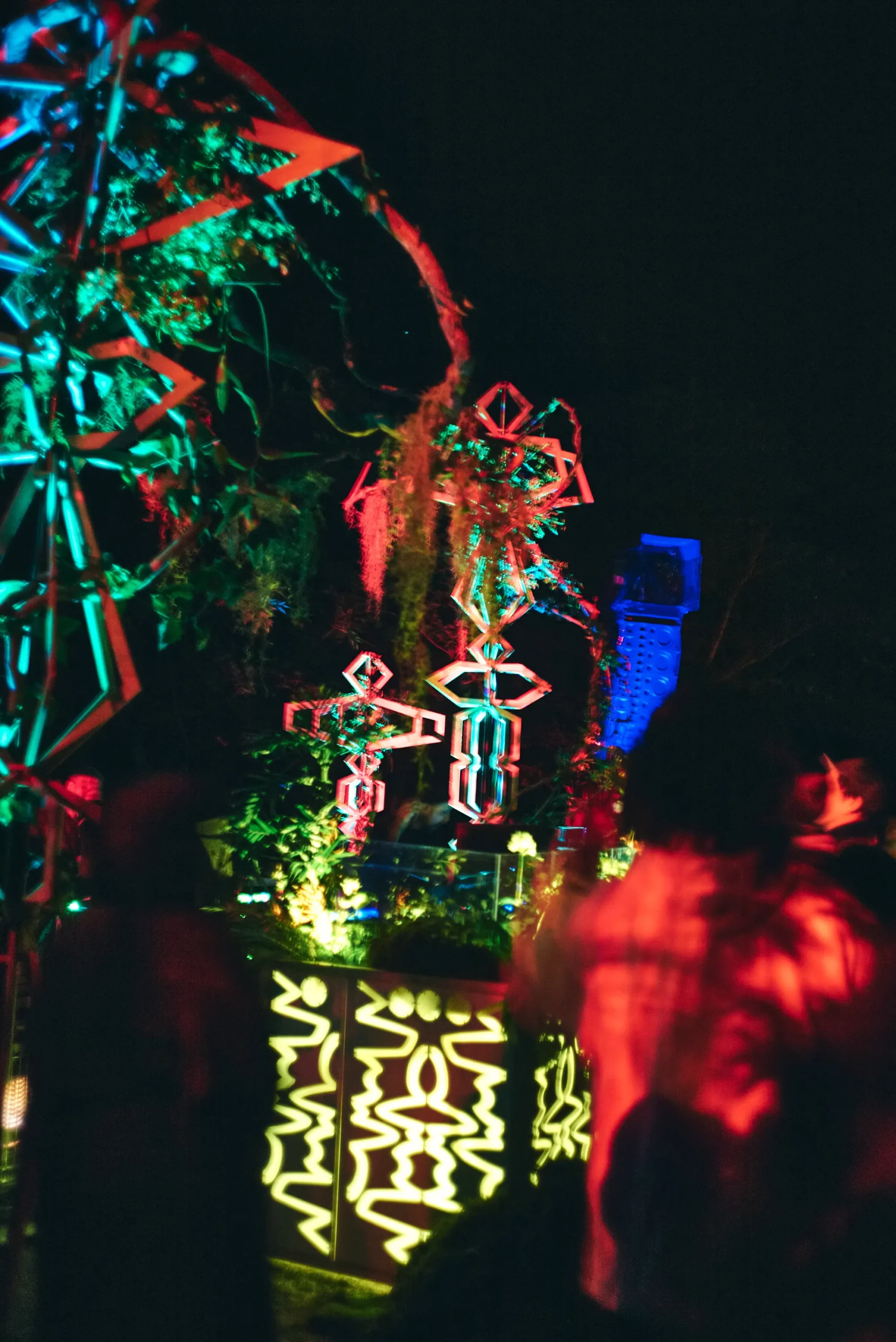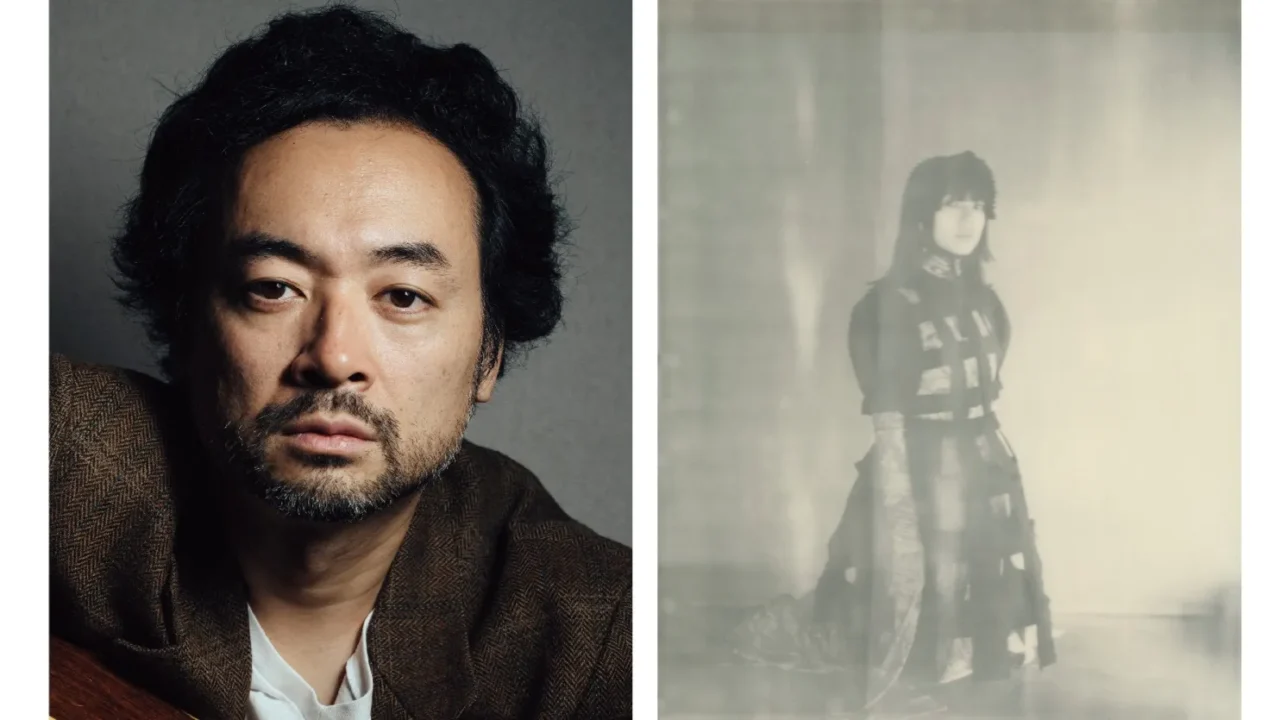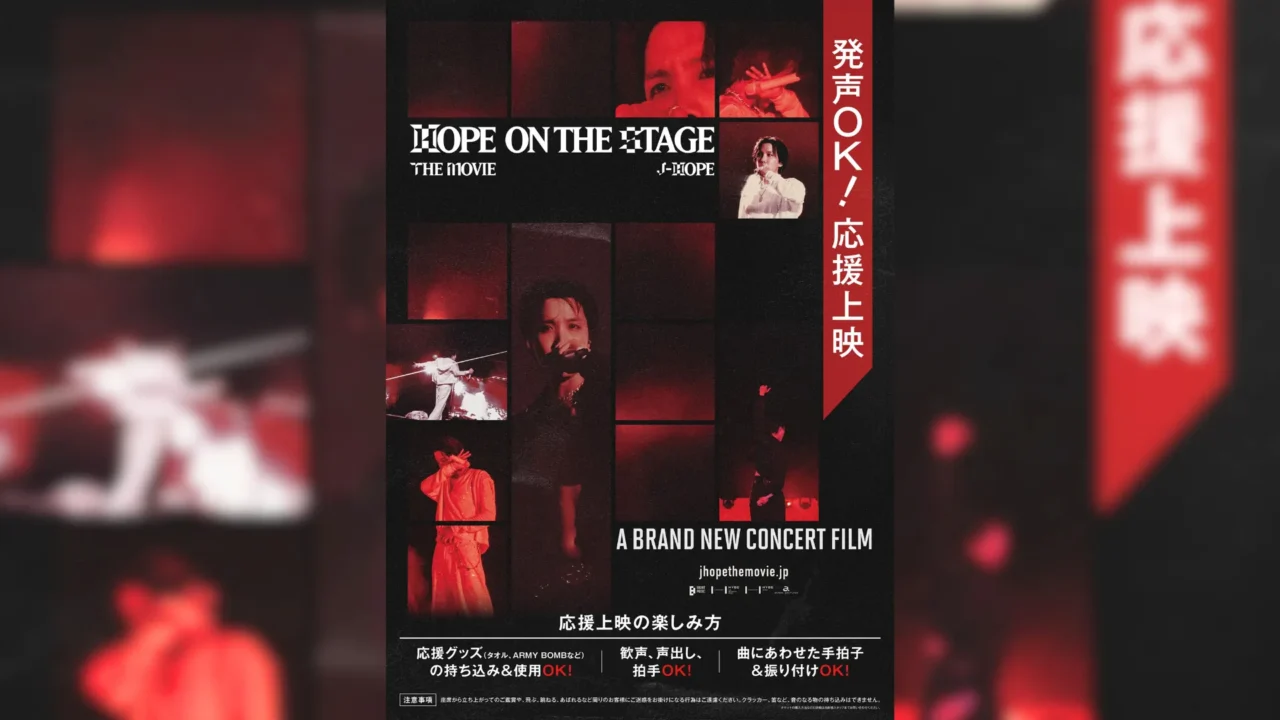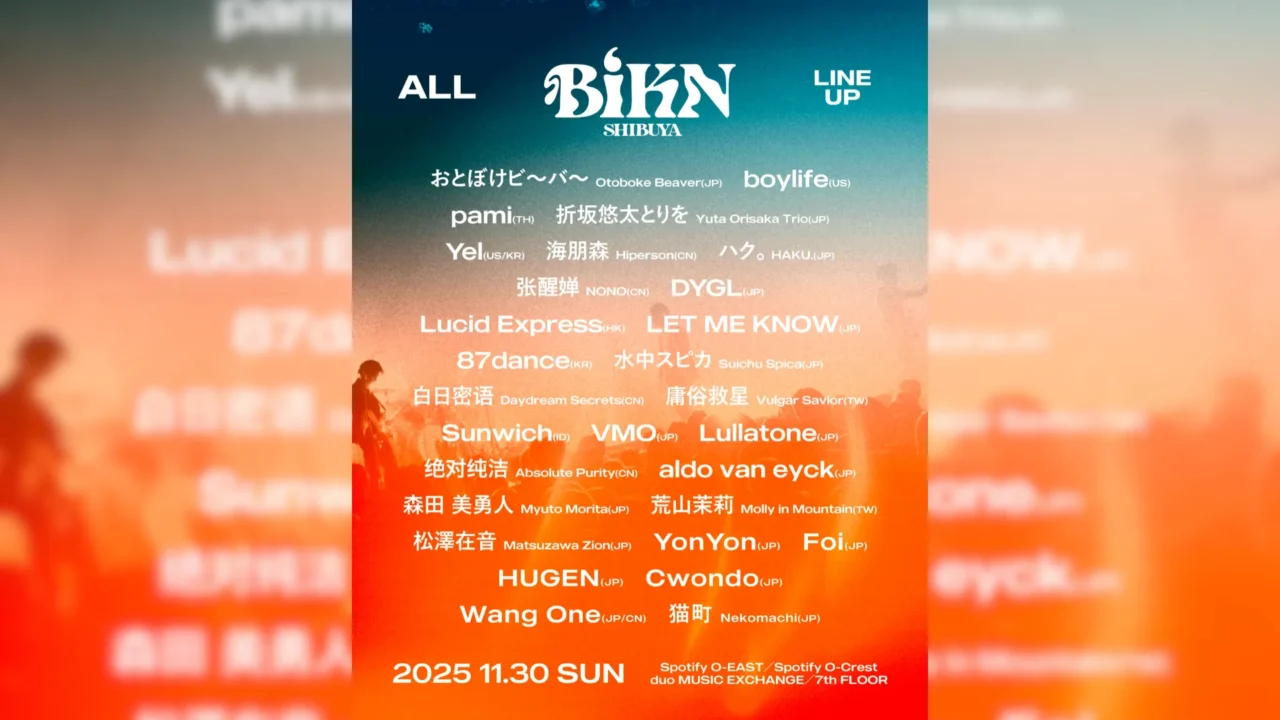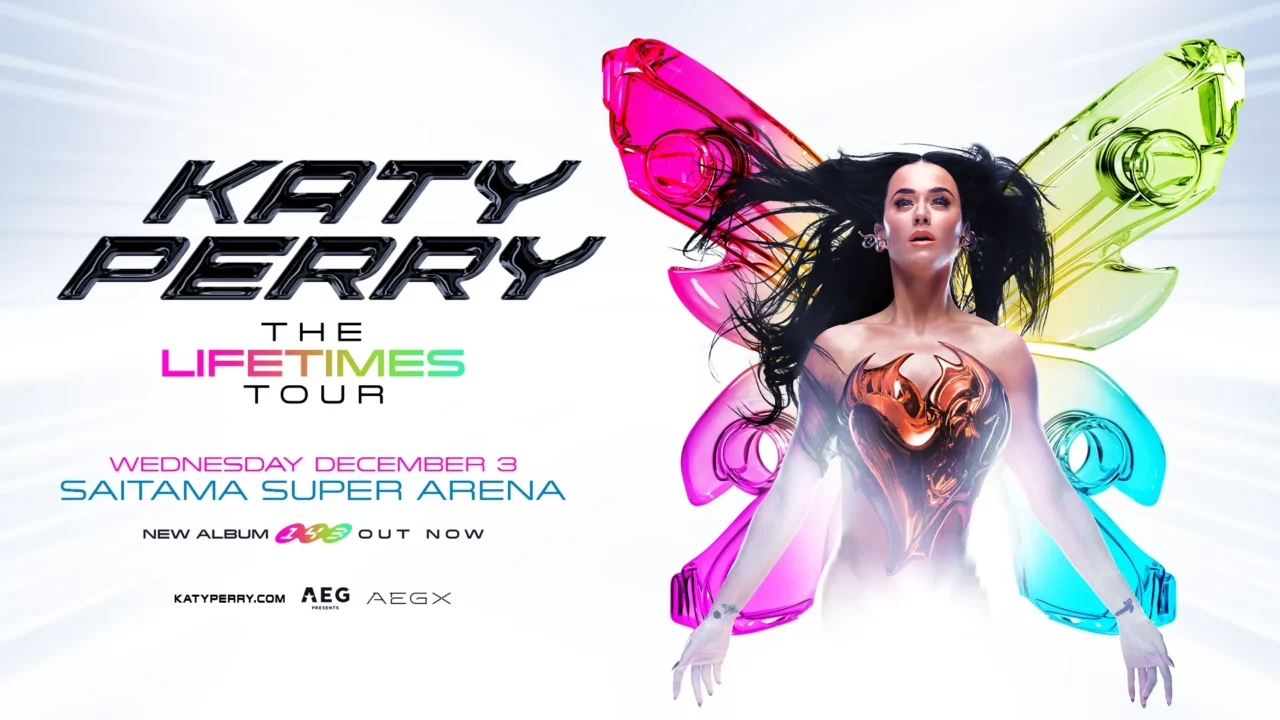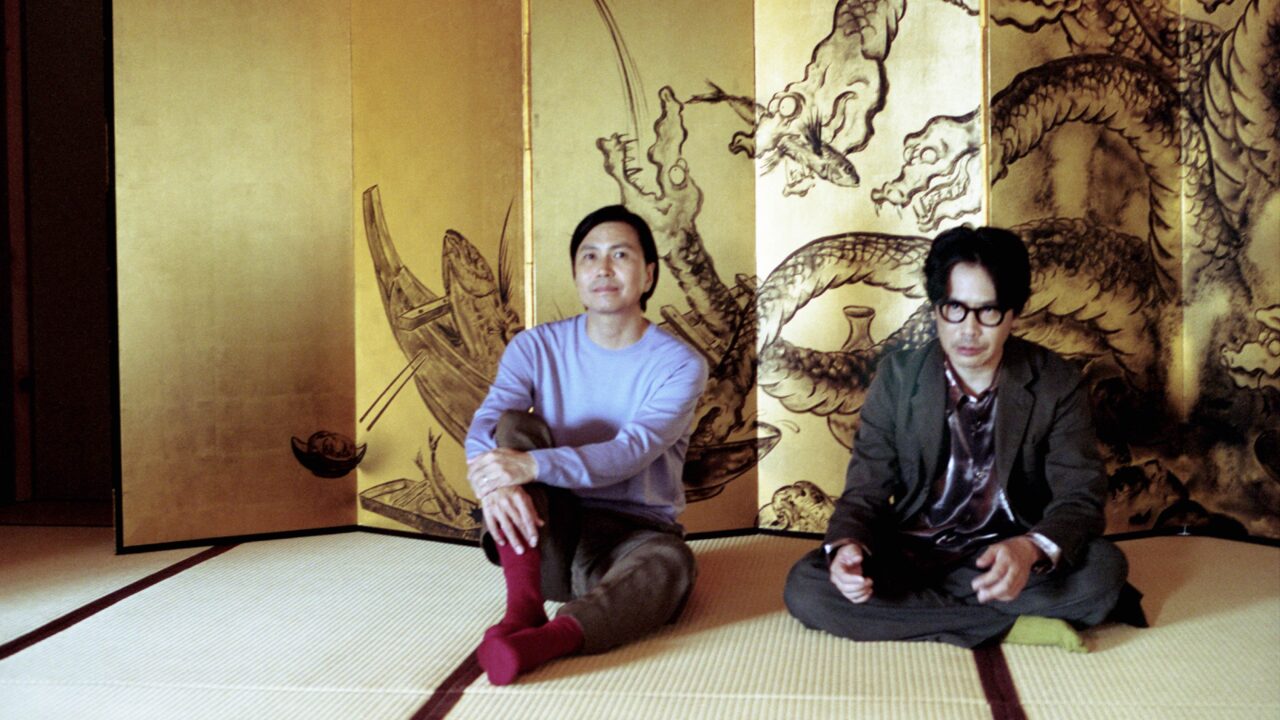Every time I step into a club or rave, I find myself craving a sense of liberation, a fleeting escape from the grind of everyday life. In search of that feeling, I bounce from party to party, only to often leave with an unsatisfied itch or, at times, a strange, lingering bitterness. Yet, every so often, I’m unexpectedly swept away by a truly remarkable event. And it’s that rare, electric magic that keeps me returning for more.
Last November, I was fortunate to stumble upon one such extraordinary gathering: Bonna Pot. Originally launched in 2019 on a rooftop in Tokyo, this event has earned widespread acclaim for its impeccable sound system, distinctive lineup, and its inclusive, boundary-pushing atmosphere. Each edition only builds more excitement, drawing in crowds from all corners.
The event returned last year to Auto Camp Ginga, a venue that had garnered exceptional feedback in the past, where over two nights, a curated selection of both local and international artists came together for a memorable experience. To delve deeper into the magic behind Bonna Pot, I spoke with the masterminds behind it, Nodoka Shimazu (Nodoka) and Koji Fujita (Fujita), to uncover the essence of this unforgettable celebration.
INDEX
Bonna Pot’s Distinctive Features: Exceptional Sound and a Square Floor Setup
Bonna Pot has quickly become a standout in the realm of outdoor music experiences, earning rave reviews for its distinctive lineup. Last year, the event brought together 16 artists and DJs, including renowned figures in deep dance music like Toshio “BING” Kajiwara, Shhhhh, and 7e, alongside exciting newcomers such as O/Y and Scott Zacharias. Centered around experimental house and techno, the event explored a vast spectrum of sounds, from disco and downtempo to trance, obscure beats, and even folk music, with genre-defying DJ sets and live performances that pushed musical boundaries.
Nodoka and Koji Fujita, both seasoned in organizing outdoor music events like festivals and raves since their teenage years, have long been pioneers in the scene. Together, they’ve hosted numerous events, with Bonna Pot standing out as an underground, genre-bending outdoor music experience. But how did they arrive at creating an event that champions such diverse and unconventional sounds? The roots of this journey stretch back to the early 2000s.
Fujita: When Nodoka and I first crossed paths in the early 2000s, I was running an event called LIVING BALL, which was essentially the precursor to Bonna Pot. We began organizing together, and in 2004, we brought an outdoor rave to Auto Camp Ginga, the same spot where Bonna Pot would eventually take place.
Before we teamed up, my events were primarily trance-oriented. But once we joined forces, our parties expanded musically, weaving in elements of techno, house, and even jazz, creating a much more eclectic atmosphere.
Nodoka: I’ve always had a broad taste in music, so when I started booking my favorite DJs and artists, it naturally gave way to something distinct. We brought in artists like Terry Tempest and Brooks from Accident Records—acts you wouldn’t usually encounter in the mainstream—and I think that made it feel pretty unconventional.
A cornerstone of Bonna Pot is the exceptional sound, expertly crafted by Koji Fujita. Fujita has earned a reputation for his work on the sound design and installation at acclaimed venues like Vent, Oath, and Blue Note Place—places renowned for their pristine acoustics. It’s no surprise that many attendees are drawn to Bonna Pot specifically for the immersive audio experience Fujita creates.
Fujita: Back when we were organizing LIVING BALL, it was the height of the guerrilla sound system trend in Yoyogi Park. We were part of that movement, bringing our own sound setup to host parties. While other crews around us were focused on cranking up the volume to the max, it quickly led to a flood of complaints from local residents and park-goers. As a result, stricter noise control regulations were enforced.
From those early days, I developed a guiding principle for my work as a PA engineer: “Don’t play aggressive sound.” I believe in creating music that has a soothing, healing effect, not something that overwhelms.
Fujita’s journey with Bonna Pot was deeply shaped by his experiences at The Loft—a legendary party that left its mark not only on the project’s sound but also its philosophical core. It was in that transformative space that he discovered the essence of “non-aggressive sound.”
Founded in the 1970s by New York DJ David Mancuso, The Loft became a sanctuary of sonic exploration. Its influence echoes through the work of legendary figures like Larry Levan and Frankie Knuckles, and continues to resonate with those seeking a deeper connection through music.
Fujita: The Loft used KLIPSCHORN speakers as its main system, and the setup was unlike anything I’d seen—the five speaker sets were arranged in a pentagon, completely encircling the dance floor. The sound was stunningly clear, yet what amazed me most was how gentle it felt. Even after hours of listening, there was no fatigue, no harshness—just pure, immersive sound.
It was a revelation. I realized that with this kind of acoustic design, music could be enjoyed fully and actively, without overwhelming anyone or intruding on the space around it.
Nodoka: I’ve been to David Mancuso’s parties more times than I can count, and every time, the first thing that catches you off guard is how quiet it seems—for a dance party, it’s almost surreal. You can’t just float in the sound—you have to lean in, really listen. But in doing so, you become more present, more attuned. That act of intentional listening sharpens your awareness, and I think it naturally leads to a more open, harmonious state of mind.
Rooted in this philosophy, Bonna Pot takes its sound design to extraordinary levels, using handcrafted speakers fitted with Taguchi’s iconic flat-panel units—meticulously built in their Shin-Kiba workshop. The entire venue is architected around sound: both the DJ booth and dance floor are encircled on all four sides by these speakers, forming a kind of acoustic sanctuary.
What’s even more remarkable is the care that goes into the setup. It took four full days—site visits included—just to determine the speaker layout. With lasers in hand, the team surveyed the uneven terrain of the campsite, adjusting each speaker’s position with millimeter precision. Every detail, down to the natural slope of the land, was tuned to perfection.
Taguchi’s speakers are no strangers to prestige—they’ve been installed at the National Theatre of Japan, Miraikan, and even the historic Nishi Hongwanji Temple in Kyoto. That same level of sonic excellence is now woven into the fabric of Bonna Pot.
The result? A sound that’s wholly organic—free from sharp edges or piercing highs—yet immersive and three-dimensional. As the music surrounds you, there’s a surreal sense of weightlessness, as if your body is gently lifting off the ground. It’s a psychedelic sensation without excess—just pure, enveloping sound. One listen is all it takes to get addicted.
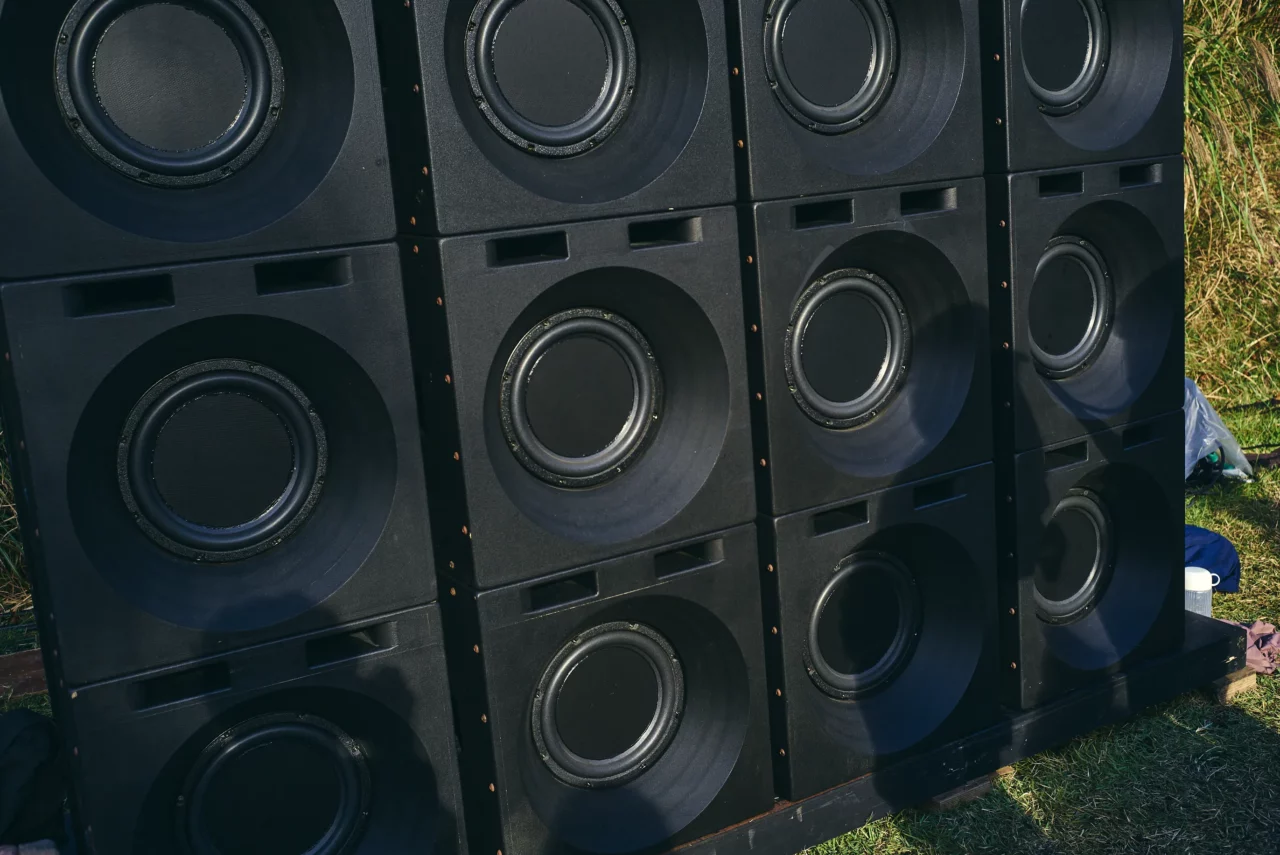
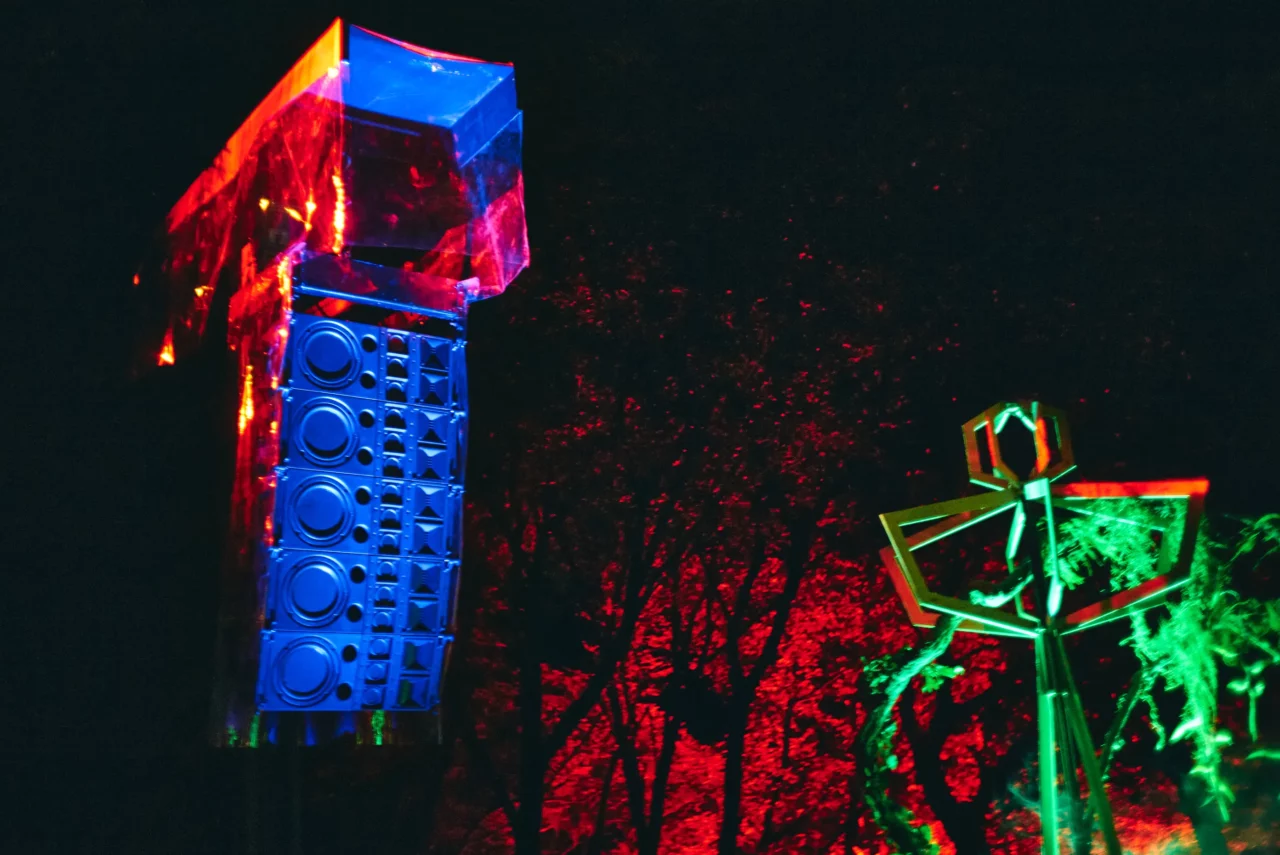
The DJ/live booth is also located inside the rectangular dance floor created by the speakers, allowing DJs and live acts to perform on the dance floor. This allows everyone in the venue to enjoy the music and express themselves in the same environment.
At most events, the booth where the performers perform is separated from the floor where the audience dances, and in many cases, there are main speakers facing the floor and monitor speakers to check the sound in the booth.
Fujita: At the first Bonna Pot, we didn’t use any monitor speakers. I wanted the DJs to hear exactly what the crowd was hearing. That way, the energy isn’t filtered—it’s mutual. When we’re all listening to the same sound through the same system, it creates a deeper sense of togetherness.
In today’s DJ culture, that split between monitor and main speakers is standard—but it creates distance, both physically and emotionally. The DJ is in one world, the audience in another. Bonna Pot was designed to dissolve that boundary. By placing the DJ inside the dance floor, the music becomes a shared current—one that moves through everyone equally. In that space, the line between performer and listener begins to blur, allowing for a deeper, more connected kind of expression.
The beauty of the design revealed itself in the faces of everyone present. Performers and dancers alike wore expressions of pure euphoria, their bodies swaying, eyes half-closed, entirely absorbed in the sound. It was as if the music had dissolved the boundaries between them, pulling the entire venue into a single, resonant pulse. The sound didn’t just fill the space—it held it, creating a shared atmosphere where everyone moved as one.
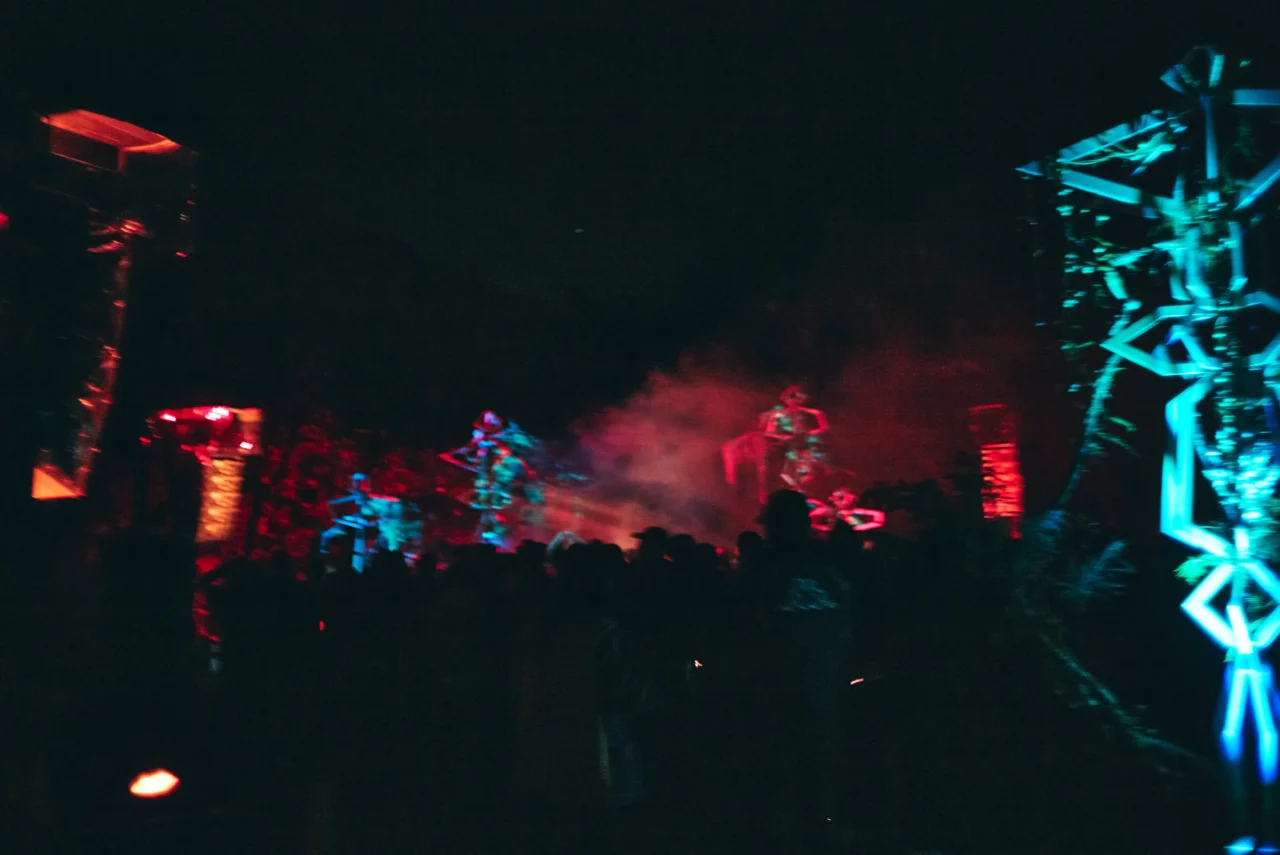
INDEX
Nodoka: “Incorporating a Sense of Active Participation in the Event and Connecting with Different Perspectives and Values”
Last year’s Bonna Pot was held at Nishi-Izu Auto Camp Ginga, a beautifully maintained campsite that has earned rave reviews from its visitors. When the event was hosted here in 2021, it also received high praise from the audience for its setting.
The dance floor was situated in the Star Viewing Site, the highest point of the campground. The expansive grassland here offers a sweeping view of the sky, where you can gaze up at the stars at night or watch the breathtaking sunrise in the morning. It’s the perfect place for Kazu’s vision—a space where the beauty of nature and the power of music can blend seamlessly.
Looking back on the event, Kazu reflected, “The focus was on how to bring out the full potential of this already stunning location. That was the core idea behind the planning.”
Nodoka: As in previous events, the first step is to meticulously track the timing of the sunset and sunrise on the event day, along with the movements of the sun and moon, using an AR app. With these natural rhythms as a guide, I craft the timetable, carefully selecting DJs who resonate with the energy of each moment. I then share this vision, ensuring their sets align with the flow of the day and night.
For the last event, I imagined the kind of music that would harmonize with the specific times of day at the Star Viewing Site in Auto Camp Ginga. I invited nø¡R to open the second day, asked BING to perform in the early morning hours before dawn, and had Scott, an expert at closing, create a powerful long set to close the final day. Each of these artists was chosen with their unique time slot in mind, reflecting the essence of that moment.
When it comes to designing the venue, I’m deeply committed to preserving the natural beauty visible from the dance floor. I make sure that no unsightly structures, like sports tents or scaffolding, disrupt the view.
When adding lighting and decorations, my goal is to blend seamlessly with the existing beauty of the space, amplifying its natural allure without overshadowing it.
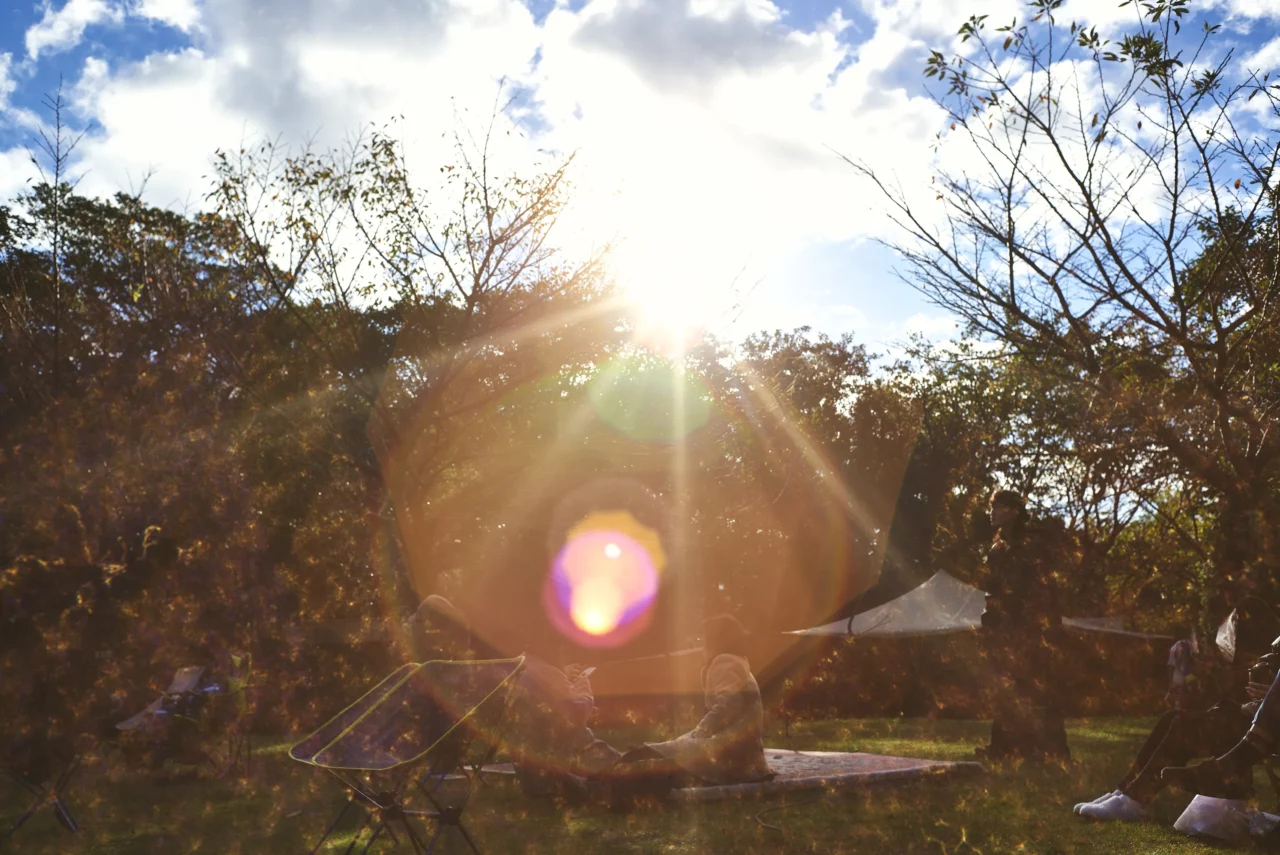
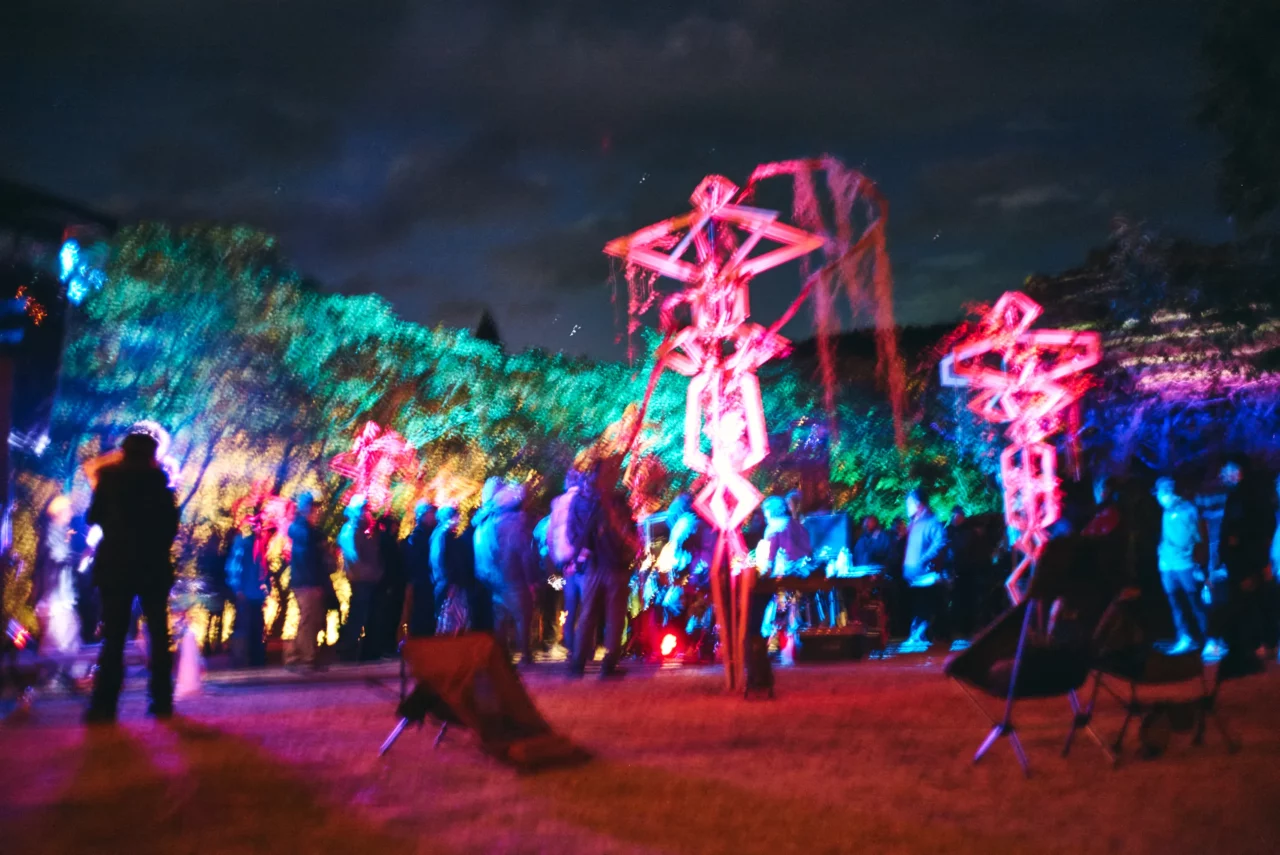
On the day of the event, the areas surrounding the dance floor and pathways were filled with booths showcasing art and handmade accessories brought by participants. As highlighted in the event’s initial statement, Bonna Pot warmly encourages the sharing and exhibition of art, creations, decorations, and performances. It was heartwarming to witness the spontaneous exchanges between visitors and exhibitors, as they connected over the unique pieces on display.
In addition, the food stalls within the venue offered a variety of options, including vegetarian and halal choices, catering to the diverse tastes and dietary needs of the crowd. This thoughtful attention to the preferences, backgrounds, and beliefs of attendees reflected the organizers’ commitment to creating an inclusive space that honors a wide spectrum of values.
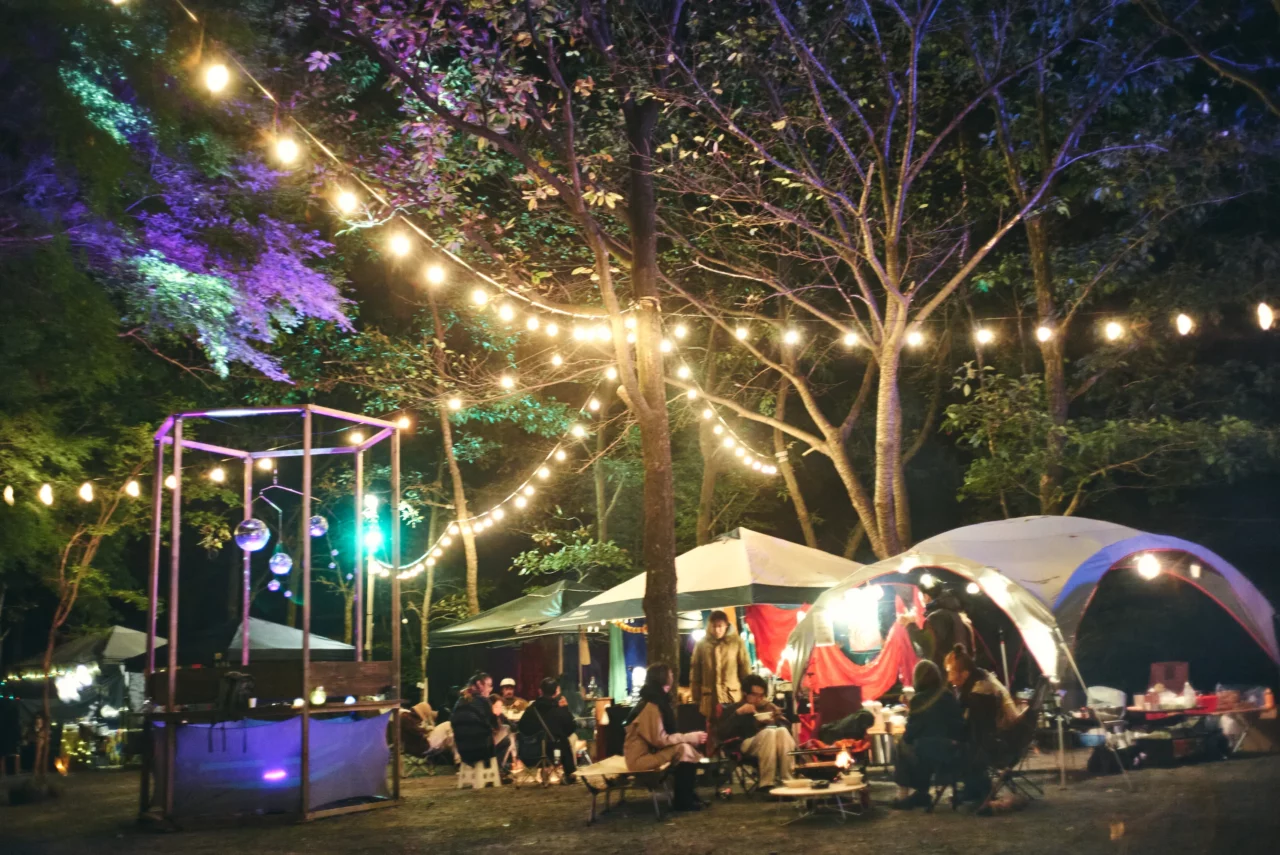
Nodoka reflects on the motivation behind these initiatives, saying, “I aimed to foster a sense of active participation in the event, while also encouraging a deeper connection with cultural differences, even if just in small ways.”
Nodoka: On the surface, it might seem like the event is an underground gathering that’s hard to access, but from our point of view, we want anyone who shares a love for music and treats others with respect to feel welcomed. We want people from all walks of life and diverse perspectives to be a part of it. This mindset is inspired by David Mancuso’s philosophy. I really connect with his simple belief that “the more diverse the crowd, the more interesting it becomes.”
We also encourage those who can’t afford tickets to contribute as volunteers. Our goal is to remove as many barriers as possible to participation. We’re focused on creating an environment where everyone feels invited and at ease to join the experience.
One more thing we focus on is keeping the dynamic between the performers and the audience as balanced and unpretentious as possible. We don’t want to create an atmosphere where performers are put on a pedestal. That’s why we’ve kept the DJ/live booth level with the dance floor and avoid spotlighting the DJs with harsh lighting.
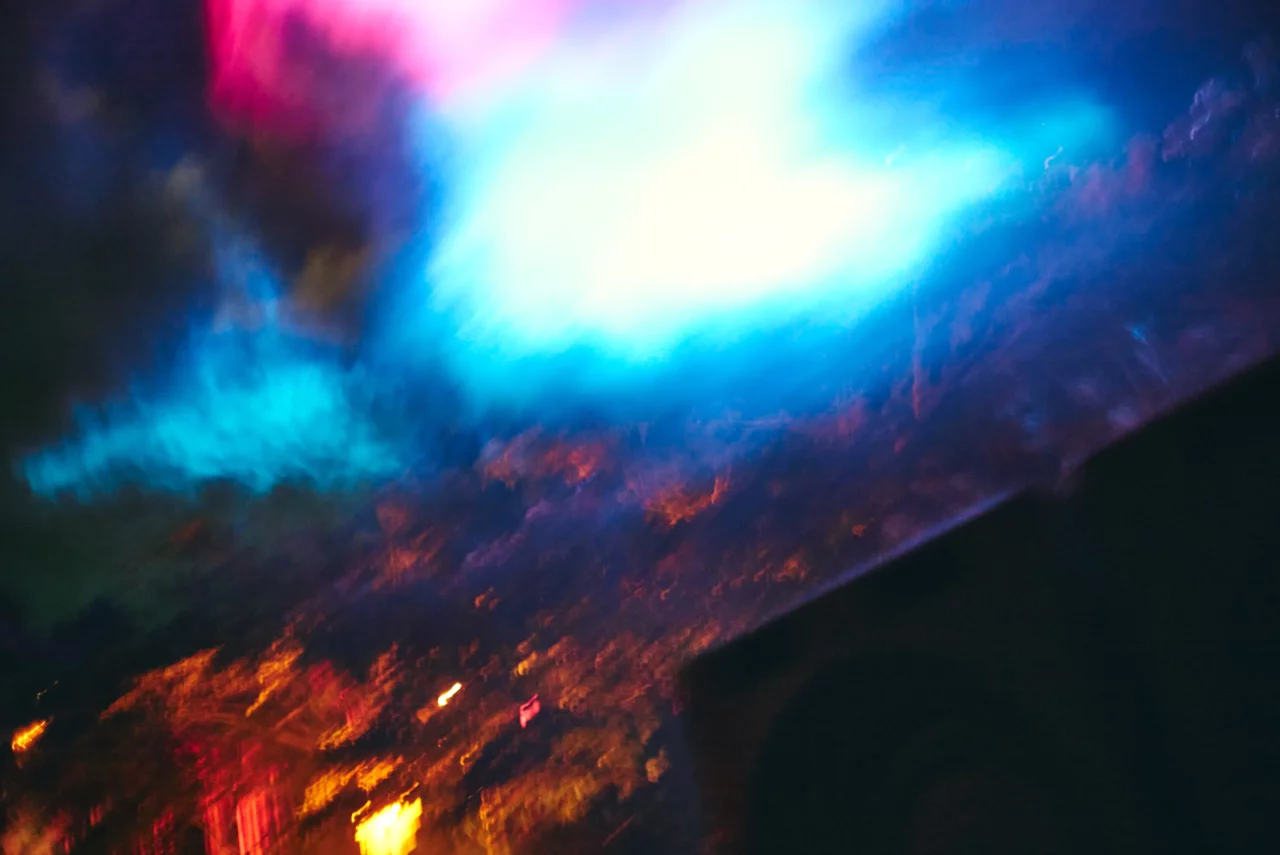
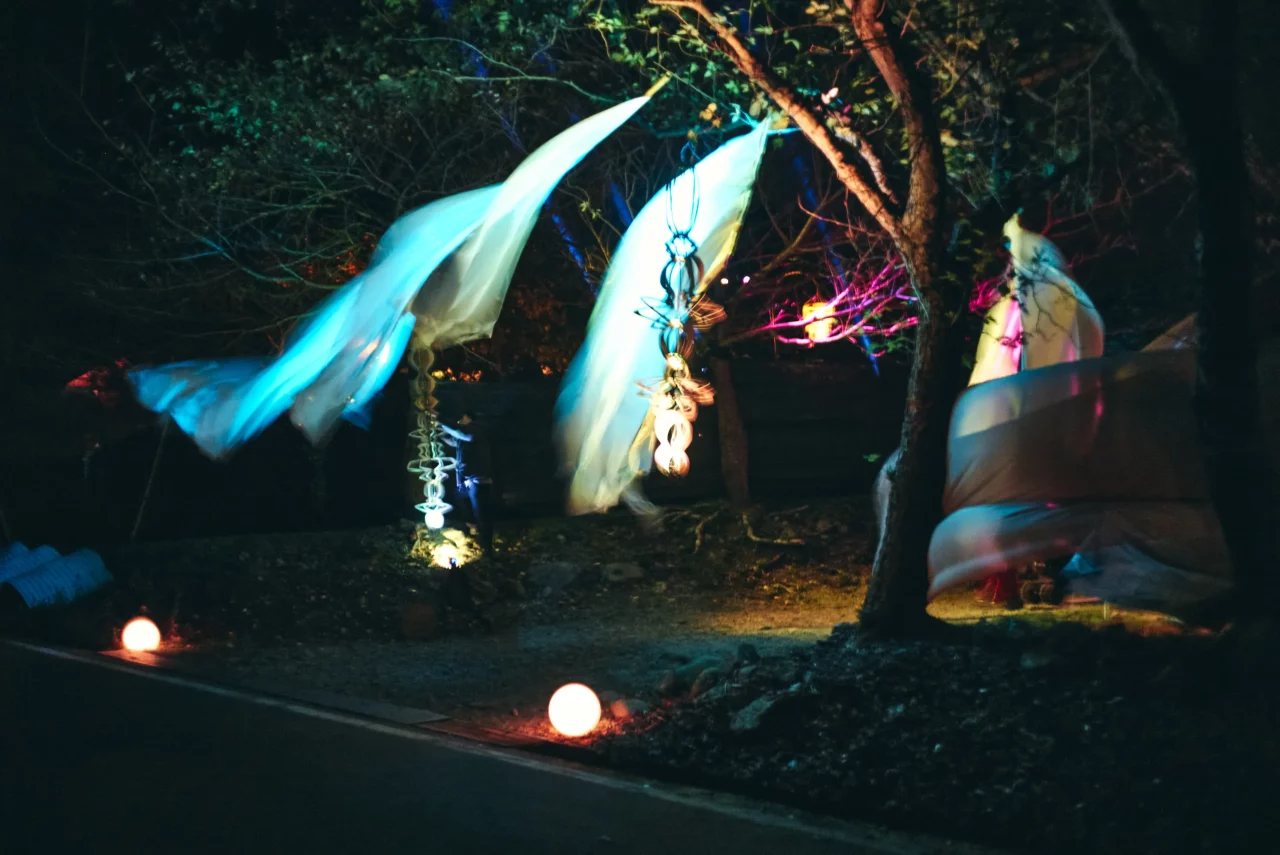
The kind of inspirational expressions we’ve witnessed, ones that transcend the realm of music, are deeply rooted in the formative experiences of both individuals, who have drawn immense inspiration from a life filled with music. “The influence we received, particularly from LIFE FORCE in the early 2000s, was truly profound,” they share. They speak about the shared, transformative experience they had at LIFE FORCE as follows:
LIFE FORCE is a warehouse and open-air party series that has been taking place in Tokyo since 1993, renowned for its distinctive sound design crafted by PA engineer Yasushi Asada.
Nodoka: What stands out to me the most are Nick The Record’s sets as the resident DJ and Asada-san’s sound design. Normally, Nick’s focus is deep house, but at LIFE FORCE, he ventured into world music, like Latin and African rhythms. These genres could easily lose their impact when mixed with house or techno, but under Asada-san’s sound system, even those tracks became the perfect dancefloor bangers.
It’s incredible how the same DJ can sound completely different depending on the sound environment. The trust the DJs have in Asada-san’s setup allows them to explore a broader range of music, knowing it will still work on the floor.
From this experience, I’ve consciously worked to create an acoustical space at Bonna Pot that encourages DJs to play a diverse range of tracks they might not typically get to play on a regular dancefloor.
Fujita: t’s not just the sound; the thoughtful design of the event itself also had a significant impact on us.
At LIFE FORCE, for example, the floor was naturally divided for smoking, but it wasn’t something the organizers enforced—it just happened organically among the participants. That really struck me. It’s a space that nurtures active, free-spirited thinking. There was a beautiful balance between freedom and order, and the acoustics, blending with the richness of the music, created an atmosphere that held real influence. I have such vivid memories of how that space shaped my sense of spirituality and cooperation.
A similar vibe can be found at LOFT. It was a place where children would play tag, and elderly couples would sit on benches, chatting for hours. At certain times, a buffet would appear, and the dancefloor would empty out. I was influenced by that spontaneous, free-flowing atmosphere. I believe that expanding the musical spectrum is an extension of that freedom. LOFT was also a place where diverse music, powered by great sound, turned into the perfect dance tracks.
INDEX
Nodoka: “I want it to be something that sparks participants to begin their own creative expressions.”
The free-flowing vibe at Bonna Pot really hit me on the final day, during Scott Zacharias’s set. At most rave parties, the last day is often marked by people unwilling to let go, dancing until they’re drenched in sweat and disheveled. Sometimes, it even feels like they’re on the verge of being swallowed up by the party, unable to return to reality.
But that day felt different. As Scott played, I saw people on the dancefloor, laughing and enjoying the music, while children ran around joyfully.
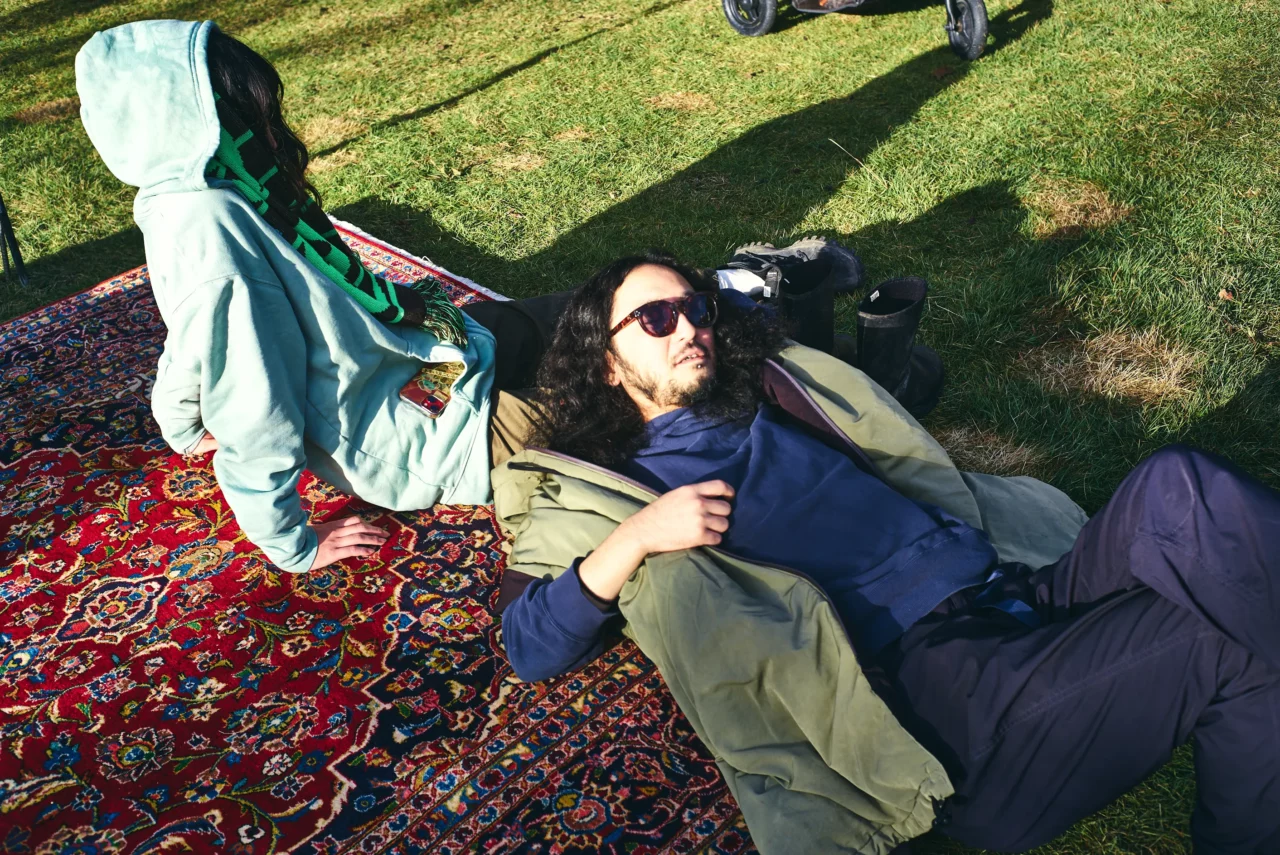
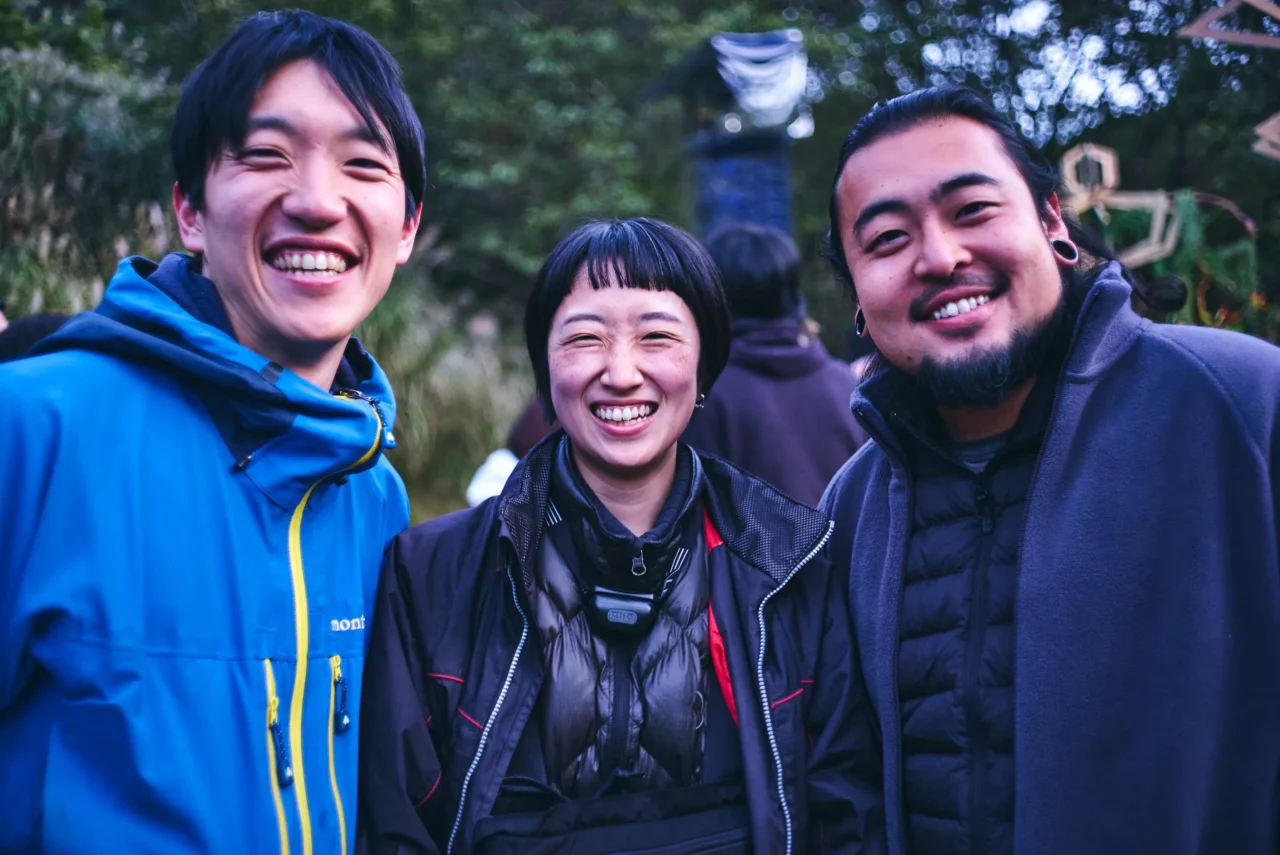
Fujita reflects, “I finally felt like I was able to share what I’ve been chasing in my party life with everyone. There’s a real sense of accomplishment in that.” He then speaks about the responsibility he feels in organizing Bonna Pot.
Fujita: I feel like we’ve finally reached the ideal outcome this time. Over the course of my musical journey, I’ve learned just how crucial it is for an event to have a proper conclusion. If it doesn’t, people leave with their spirits still lingering, untethered. I’ve always felt a strong sense of responsibility to close things out properly—it’s almost a duty for those of us organizing the event.
Nodoka nods in agreement, adding, Scott really tied everything together.
Kazu: It wasn’t just about ending beautifully; it felt like the beginning of something new was on the horizon. Someone shared on social media that it was like ‘ending while beginning,’ and that truly captured the essence of the set. It was a creative journey that seemed to connect not only to our everyday lives but to what lies beyond.
While making sure everyone enjoys Bonna Pot is a key goal, I also want it to ignite something in participants, encouraging them to begin sharing their own creativity. I hope it serves as a spark—providing the motivation and inspiration for individuals to express their unique perspectives, which can lead to personal creativity and active innovation.
As both of them pointed out, the essence of Bonna Pot wasn’t just the allure of escaping from everyday life—it was the sense of actively engaging with the world around us. The dance floor was alive with soothing sounds, conversations unfolded effortlessly between attendees, and the scattered art installations sparked creative energy. Each element seemed to ignite a sense of vitality, inspiring people to infuse their own daily lives with color.
Nodoka: The DJs we admire are those whose sets speak volumes about their deep love for music. They play with passion, and their ability to truly ‘listen’ to the music they’re playing is extraordinary.”
“When we put together Bonna Pot, we focused on the importance of listening with respect, love, and gratitude for all voices around us. This includes everyone—from the staff, performers, and participants to nature itself and the wisdom passed down through generations. By embracing this approach, we believe we can create a space that nurtures a harmonious community.
Fujita: What we’re trying to share isn’t just about the party; it’s about everything around us—the entire planet. If it can provide strength for living tomorrow, then we’ve done our job.
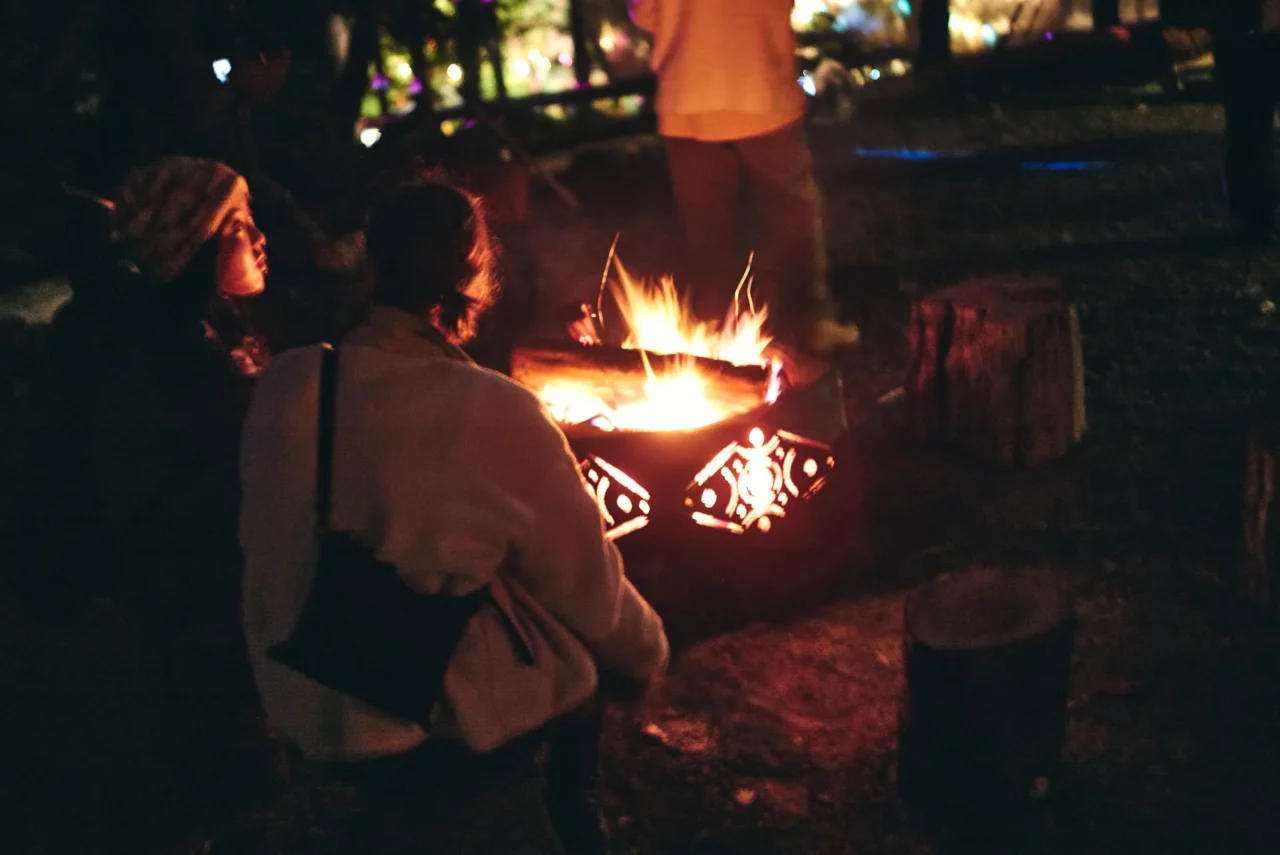
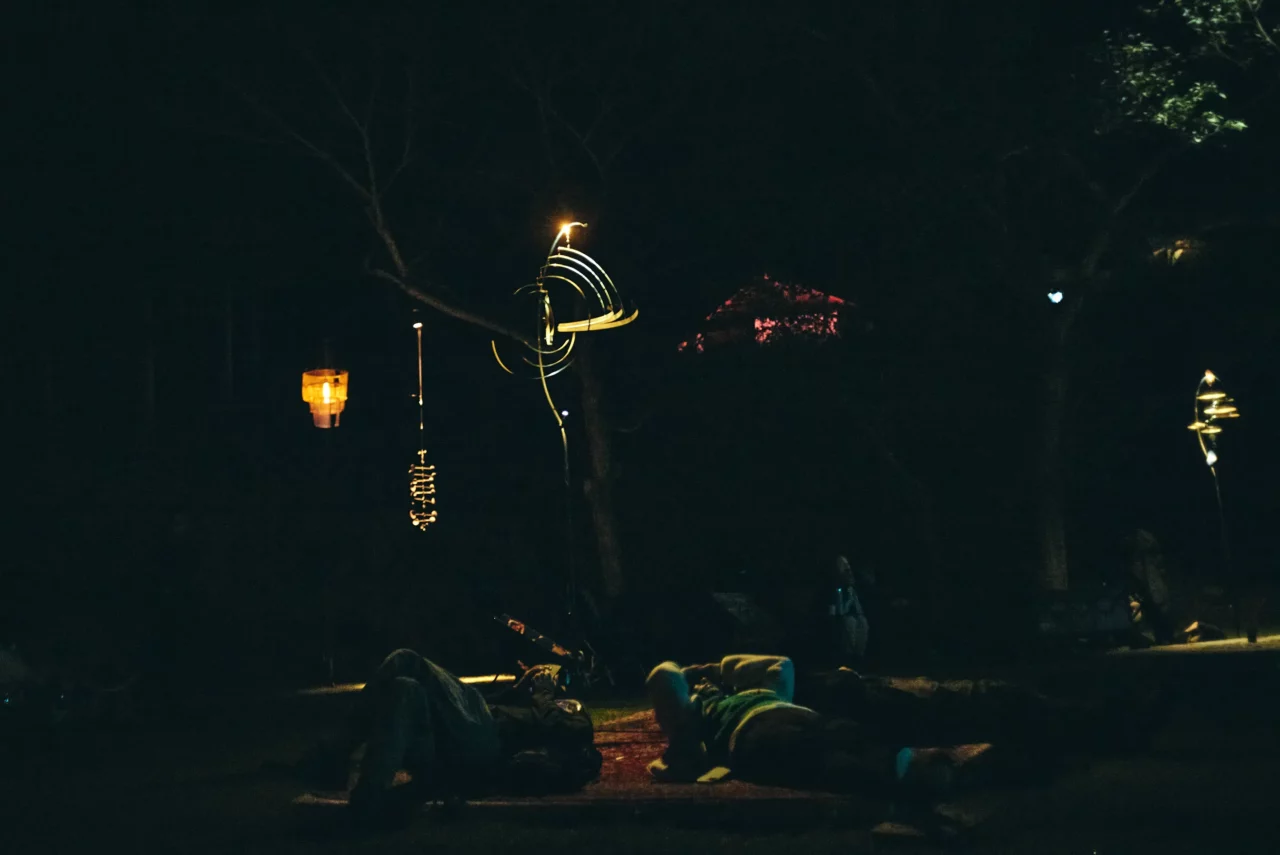
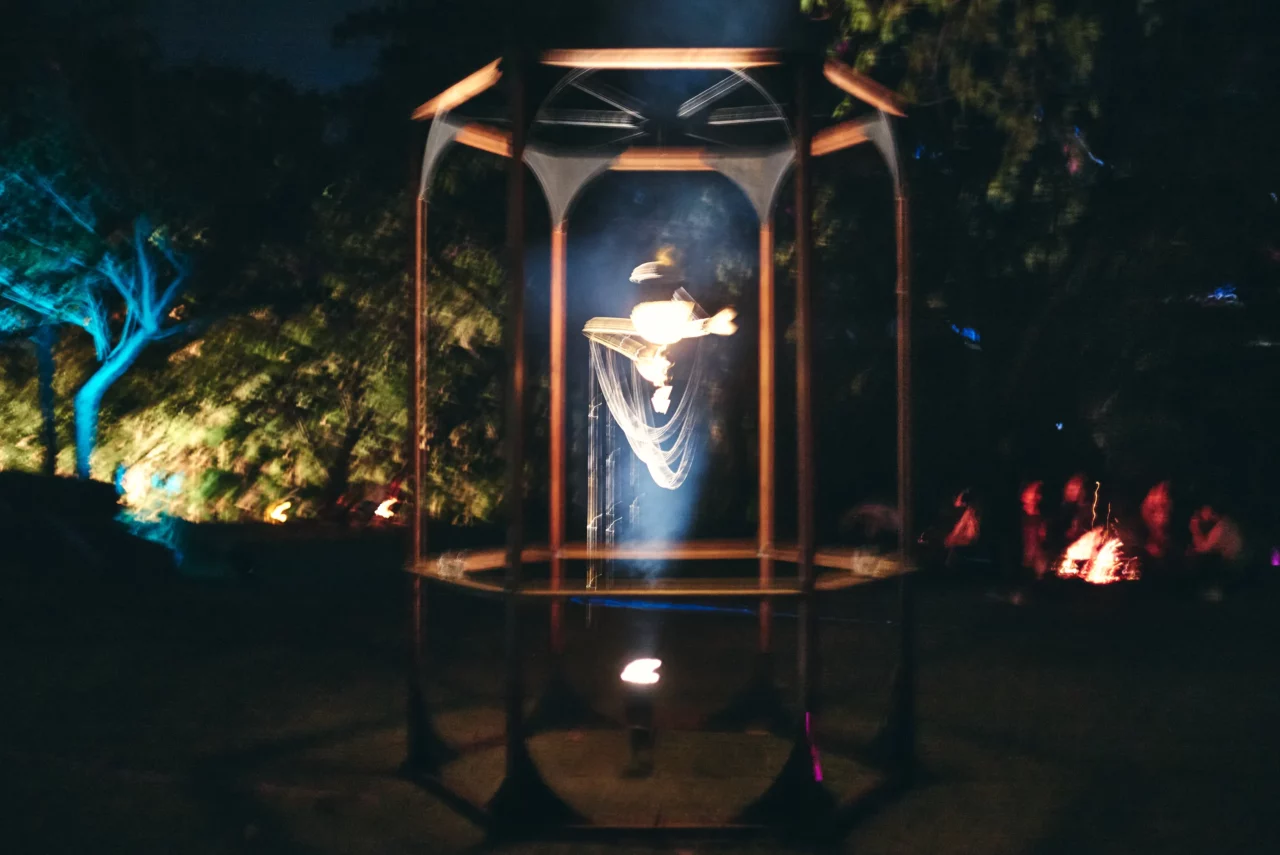
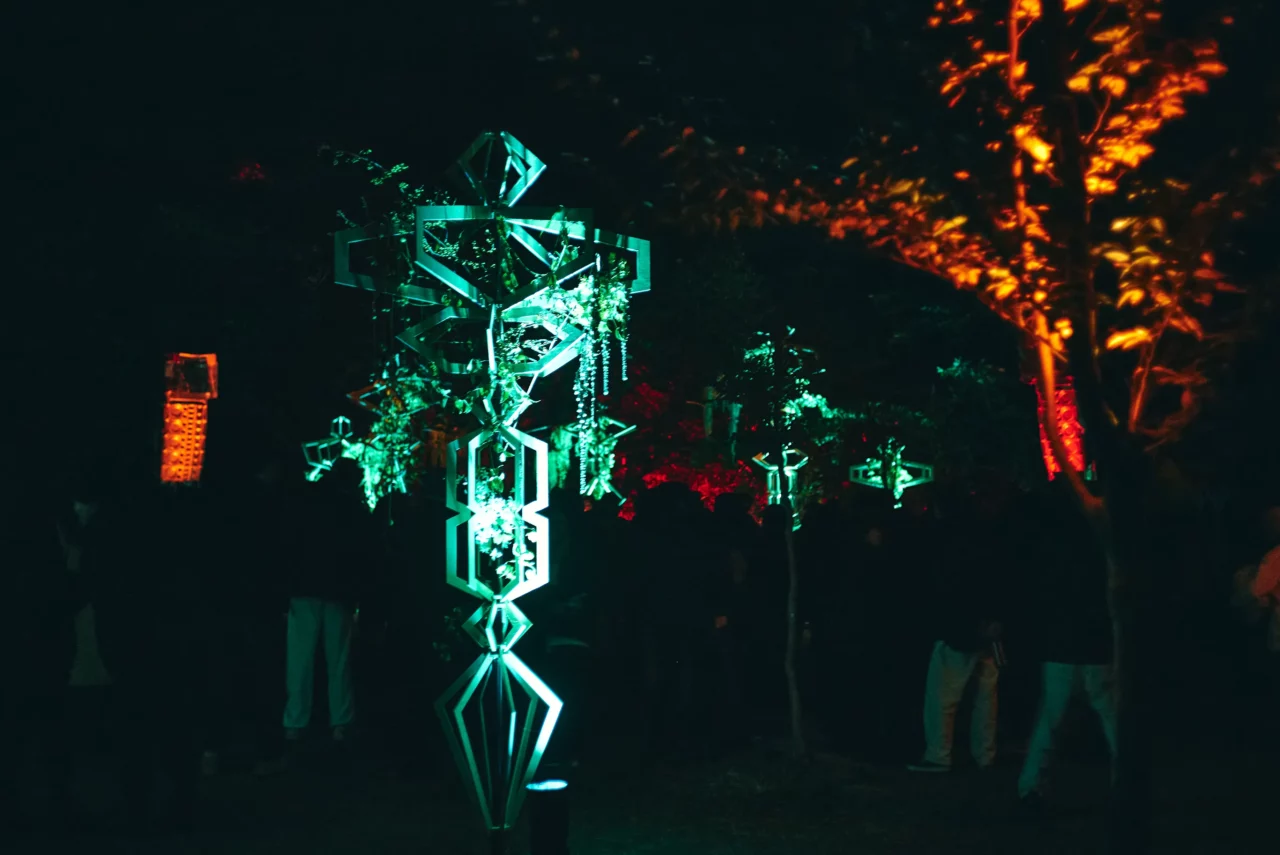
Nodoka Shimazu
The mastermind behind Bonna Pot and the force behind NUSIC, he navigates the music industry as an agent, promoter, and talent booker, working across both underground and mainstream scenes. His love for outdoor parties and festivals took root in his mid-teens, leading him to immerse himself in the professional music world while still in high school. A key figure at Hot Staff Promotion (Japan’s largest concert promoter) from 2009 to 2012, he contributed to the creation and execution of massive events like Fuji Rock Festival and Asagiri Jam. With 25 years of experience in outdoor music event production, he’s relentlessly pursued new musical experiences and undiscovered artists, having lived in over 40 countries over 12 years. His career has seen him bring cult DJs and artists to Japan, including for Bonna Pot. Among his greatest musical moments was seeing Roger Waters (Pink Floyd) perform at a festival in Southern California in 2016, a memory that remains etched in his heart.
Koji Fujita
The visionary behind Bonna Pot and the founder of Hiranya Access Co., Ltd., he is a soundscape designer with a rich history as a PA and sound engineer specializing in dance music. Beyond his work as an engineer, he has shaped the acoustics of everything from retail spaces to custom solar-powered sound systems, even designing SR speakers.
His journey into sound design began in the early 2000s, and over time, he realized that the essence of a performance hinges on the quality of the sound environment. This insight led him to pursue environments that are not just technically flawless but emotionally engaging — from high-energy festivals to intimate private settings.
In the late 2000s, alongside his PA work, he expanded into designing sound systems for spaces like the Micro Office (predecessor to DOMMUNE), the Omotesando club VENT / WALL&WALL, the Nihonbashi hotel K5 (B), and the Ebisu music venue Blue Note Place. His design work has become renowned for creating spaces that are both sonically rich and atmospherically comfortable, earning recognition across Japan, with over 200 facilities designed and built.
In the wake of the 2011 earthquake, he co-founded “RA – energy design” with the late Kazunori Taguchi, developing solar-powered sound systems that brought solar-powered events to life, including the Nakatsugawa The Solar Budokan festival, which expanded to accommodate 5,000 people. Currently, he’s preparing to push the boundaries of immersive sound with projects like Dolby Atmos, and is in the process of building a studio to explore new dimensions of sound.
Bonna Pot
November 8 (Friday) – 10 (Sunday), 2024
Venue: Auto Camp Ginga, Nishi-Izu
Music by:
Abiu
AKIRAM EN
ALICIA CARRERA
An-i
CHIDA
CS + Kreme -LIVE-
∈Y∋
鏡民
nø¡R
O/Y -LIVE-
Scott Zacharias
Shhhhh
Sunju Hargun
THOMASH -LIVE&DJ HYBRID-
Toshio “BING” Kajiwara
7e
Sound Space: HIRANYA ACCESS
Speaker System: TAGUCHI
Lighting, Deco & Structure:
Forie
Hikariasobi Club
Keisuke Yago
密林東京 (Mitsurin Tokyo)
RGB
SHINOBU HASHIMOTO
Stretch Tent Company
Uno Yoshihiko
Food, Drink & Market:
MANGOSTEEN
Nishi-Izu Shokudo (Nishi-Izu local Japanese food)
Ramen Matatabi (Additive-free Ramen)
FermenCo. (Wood-fired pizza)
Vimana Curry (South Indian cuisine / Veggie options)
Korean Cuisine Yugyong
Kona-ya (Supplements)
Tiny Bird Coffee Service
TOKYO KAN KAN
Raw Chocolate by Grrrden
SoundCloud: Bonna Pot
Instagram: @bonnapot_nusic
X: @Bonna_Pot


